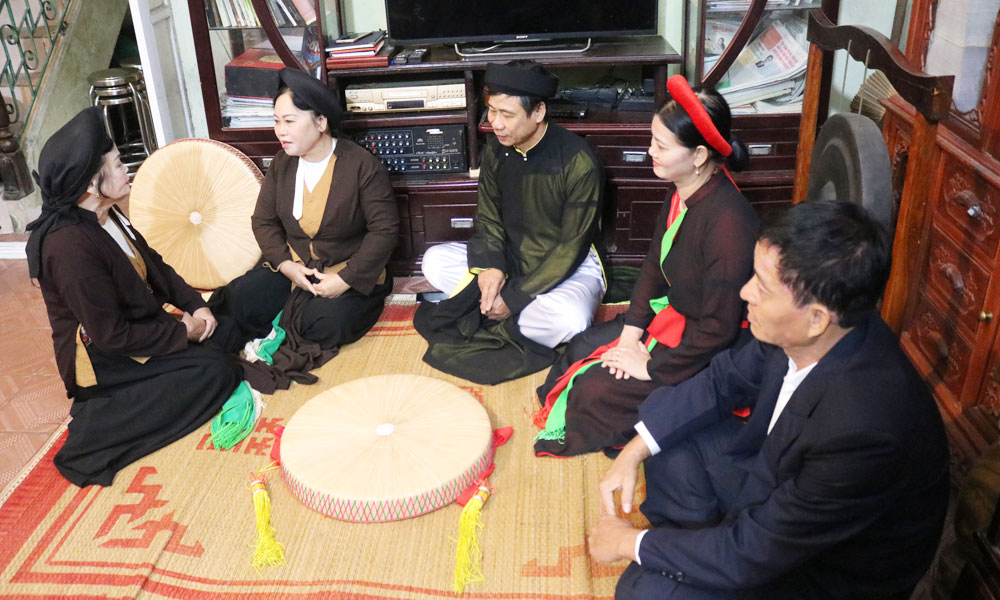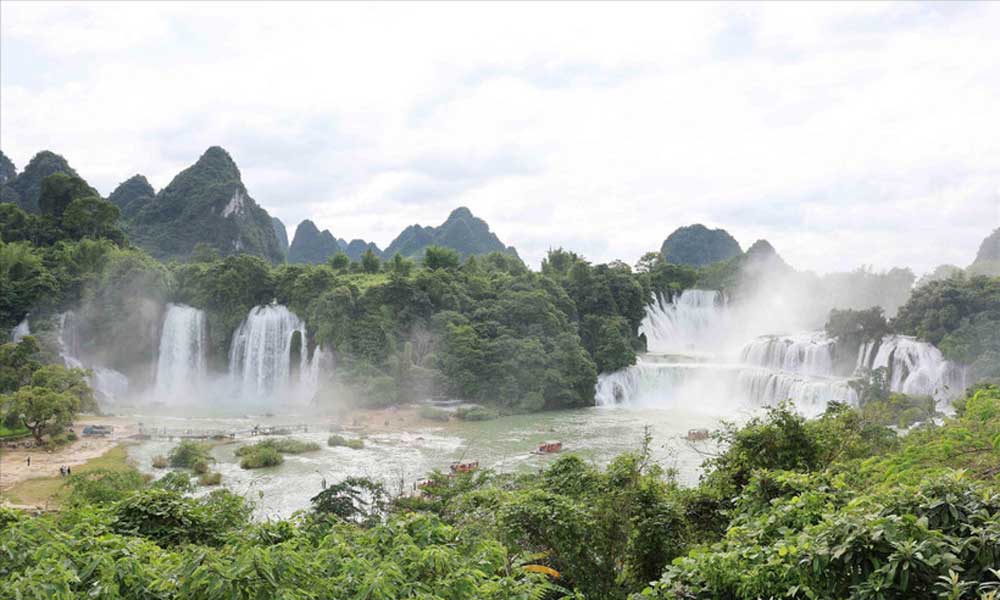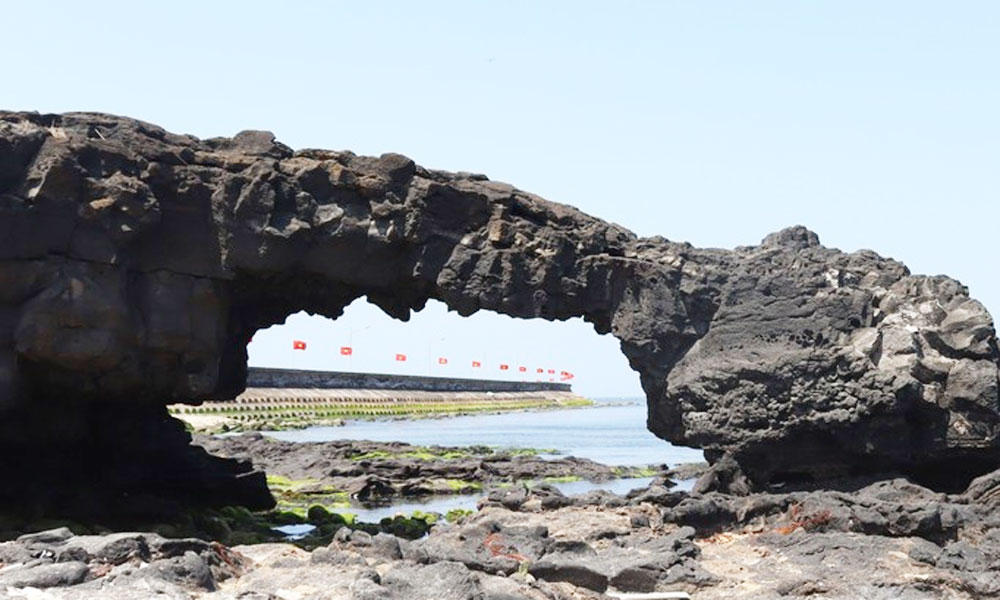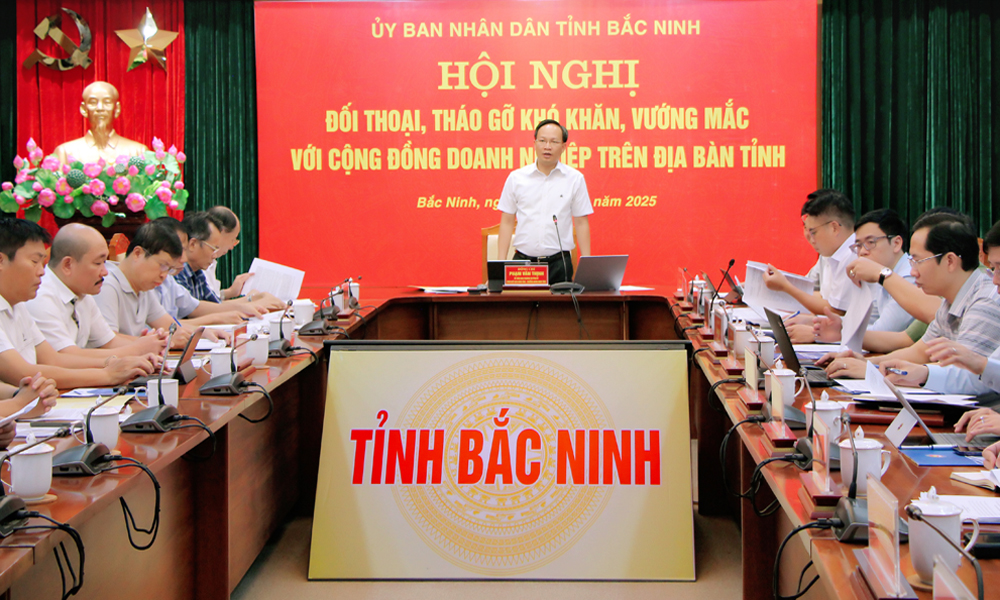Bac Ninh promotes community-based tourism along Cau River
BAC NINH - Stretching along both sides of the scenic Cau River, the rural landscape of Bac Ninh remains as timeless as ever - home to ancient villages, moss-covered temples, and the soulful melodies of Quan ho (love duet) folk songs, echoing across the water. Amid this rich cultural backdrop, community-based tourism is emerging as a fresh economic driver, preserving heritage while opening doors to sustainable development.
One standout destination is Diem village (Kinh Bac ward), known as the birthplace of the founder of Quan ho singing. This is the heartland of the Bac Ninh Quan ho folk music, recognised by UNESCO in 2009 as an Intangible Cultural Heritage of Humanity.
 |
|
Tourists enjoy traditional Quan ho performances at the Sang-Them Quan ho Library in Diem village. |
Visitors to Diem are immersed in the serene atmosphere of a traditional Vietnamese village, with landmarks such as the Cung Temple, Ngoc Well, Vua Ba Temple, Diem Communal House, Hung Son Pagoda, and the architecturally unique Bac Ninh Quan ho Theater - designed with modern lines but inspired by the traditional curved roof of a dinh (communal house).
A particularly special feature in Diem is the Quan ho Library, curated by two sisters - People’s Artist Nguyen Thi Them and Meritorious Artist Nguyen Thi Sang. The collection houses hundreds of documents, artifacts, and traditional costumes.
Visitors can enjoy live, unaccompanied Quan ho performances, try their hand at tem trau (betel leaf folding), learn Quan ho singing techniques, and explore the customs of this vibrant art form.
Just a short 5-7 minute boat ride across the river lies Tho Ha village (Van Ha ward) - a place that feels like a journey back in time. Narrow alleyways, rustic pottery walls, and tiled roofs weathered by centuries create a charm that captivates every traveler.
According to local surveys, Tho Ha has preserved 17 ancient homes ranging from 150 to 300 years old. Of these, 14 have been deemed suitable for community tourism, and two households currently welcome guests: Trinh Dac Mui in hamlet 3 and Trinh Quang Liem in hamlet 2.
Mui’s nearly 300-year-old Dai Khoa wooden house is a popular stop. "In the past three years, we’ve had visitors almost every day," he shared. "Some American tourists arrived at 5 a.m. just to experience the rural morning market, shop for fresh produce, and cook it themselves here at the house."
His family is able to accommodate dining and overnight stays for groups of several dozen.
Beyond the architecture and culture, Tho Ha is a haven for traditional food lovers, offering local specialties like rice paper rolls (banh da nem), rice cakes (banh duc, banh khuc tai beo), and the renowned Van village rice wine.
 |
|
Local children paint ceramic designs at Duc Thinh Pottery Studio in Phu Lang village. |
Further downstream is the famed Phu Lang pottery village (Phu Lang commune), boasting a 700-year legacy. Known for its rustic eel-skin-glazed ceramics, Phu Lang is home to over 200 active pottery households.
The rhythmic sounds of potter’s wheels and clinking kilns blend with the laughter of children, capturing the energy of a living craft village.
At Duc Thinh Pottery Studio, Nguyen Thi Hoa, wife of artisan Nguyen Duc Thinh, shared how they’ve expanded their offerings since 2019. In addition to decorative pottery and ceramic paintings, the family now runs hands-on workshops.
"Every year, thousands of students come here to tour, mold clay, and paint their own pieces," she said. "They leave with a unique souvenir made by their own hands." This model is proving to be a magnet for craft village tourism.
For community-based tourism along the Cau River to truly thrive, Bac Ninh needs a comprehensive strategy. That means expanding partnerships, enriching visitor experiences, and creating a seamless, curated tourism journey.
 Bắc Ninh
Bắc Ninh













Reader's comments (0)